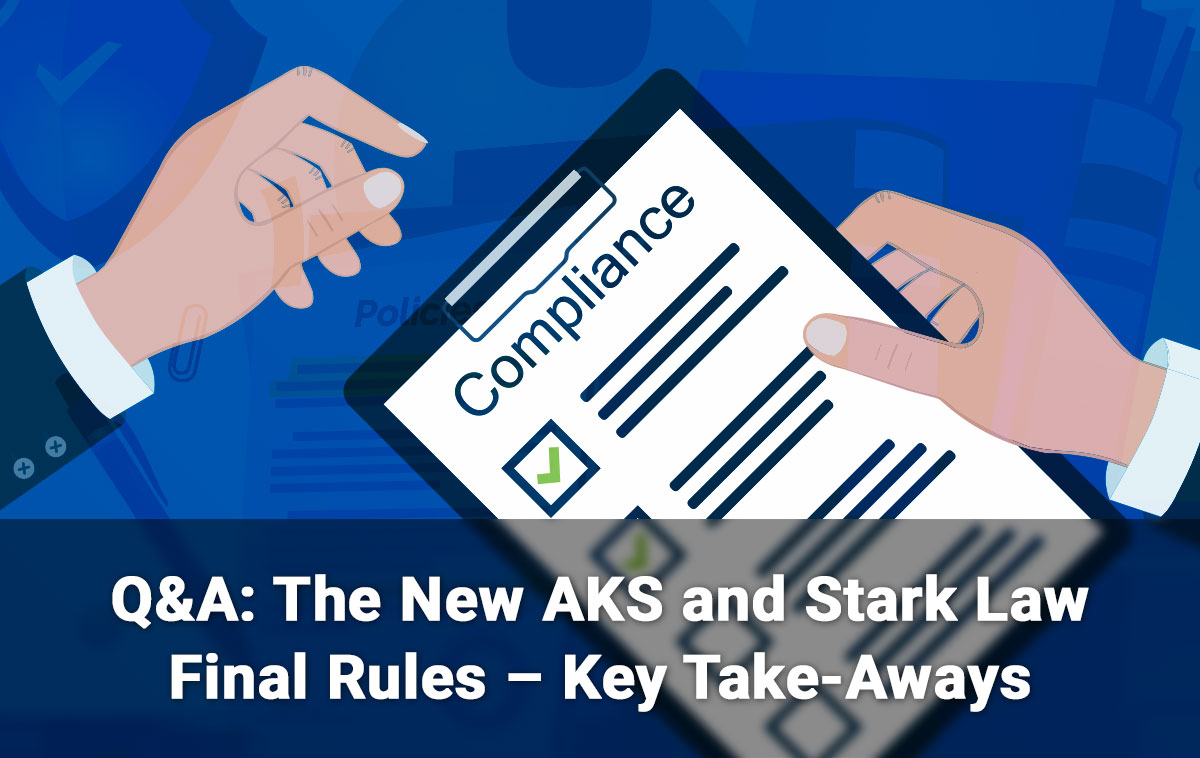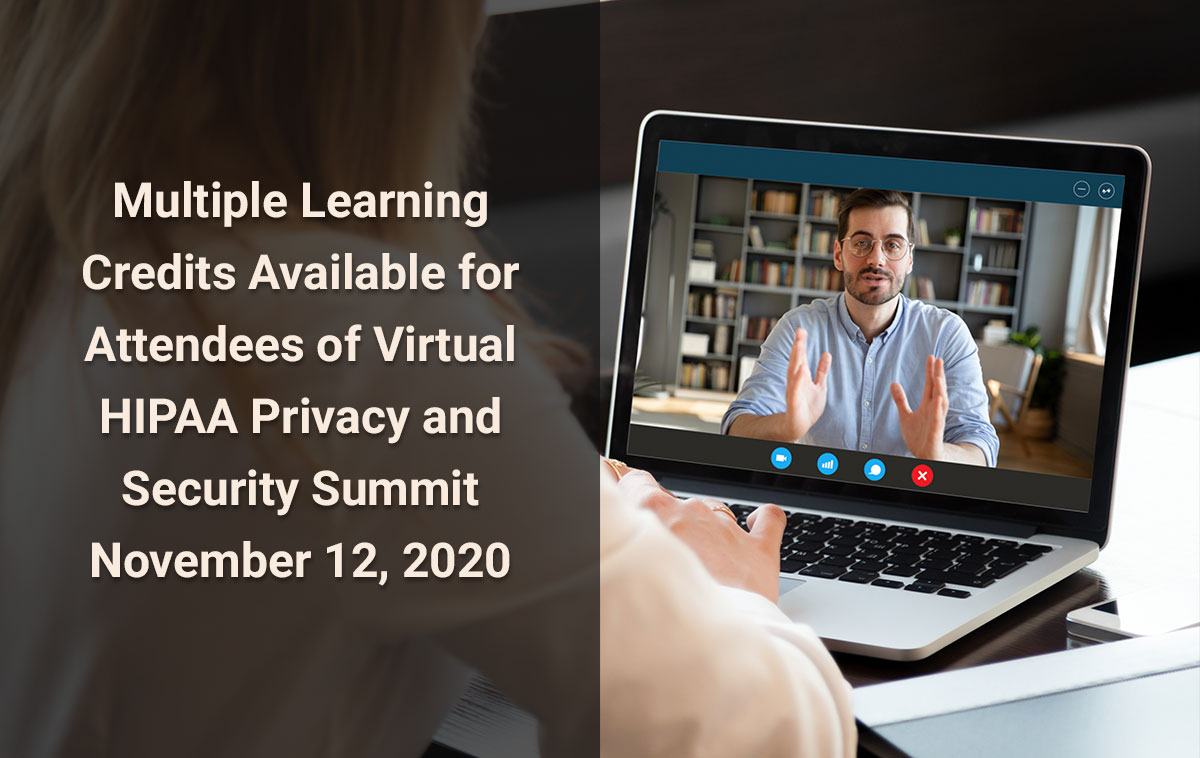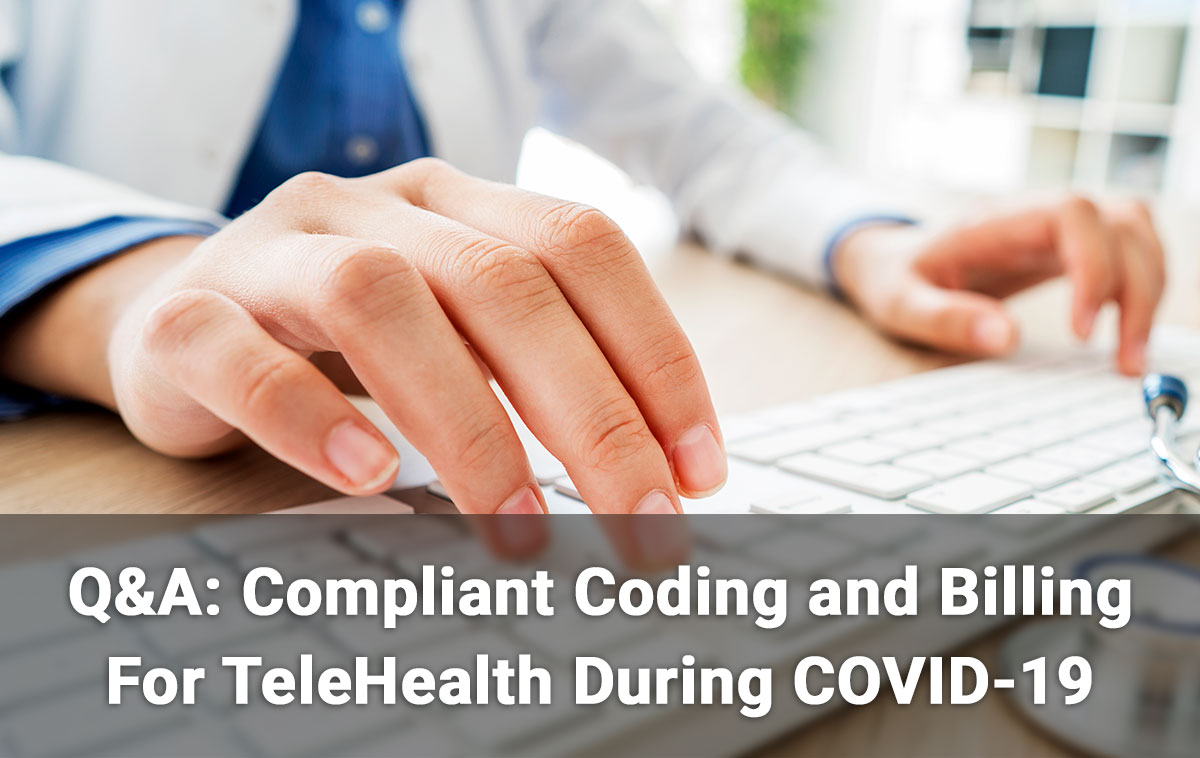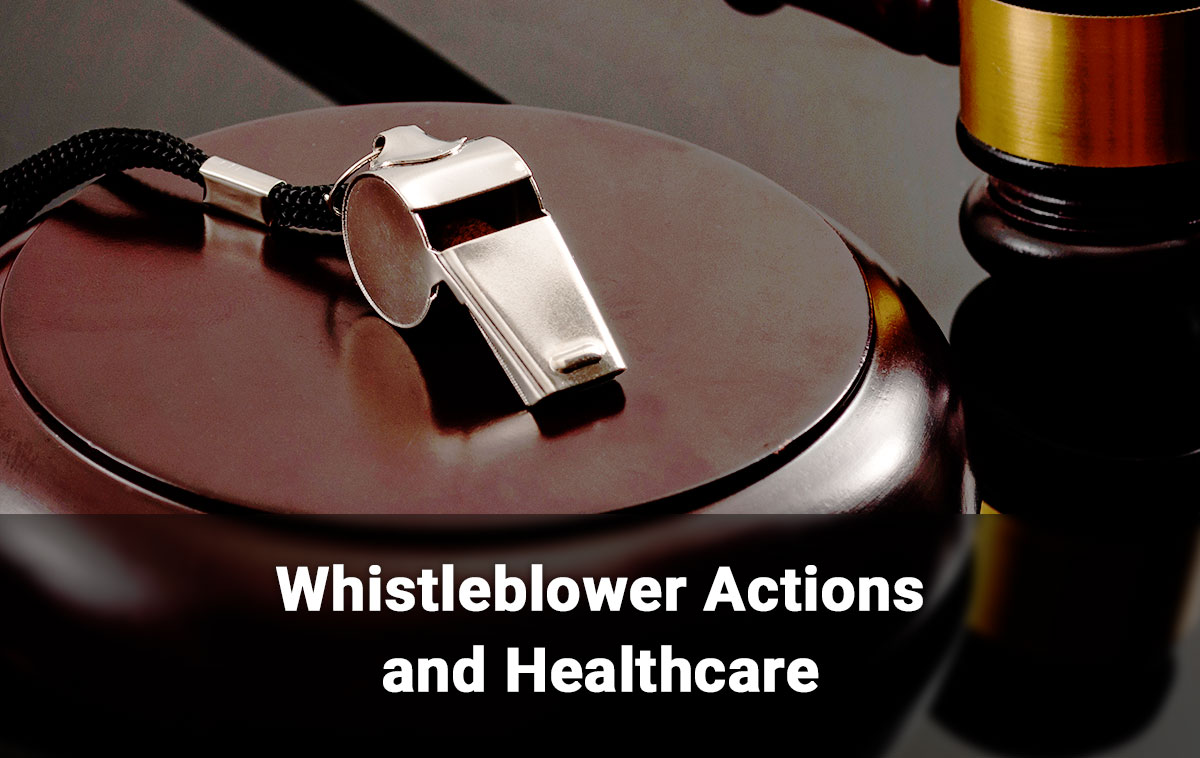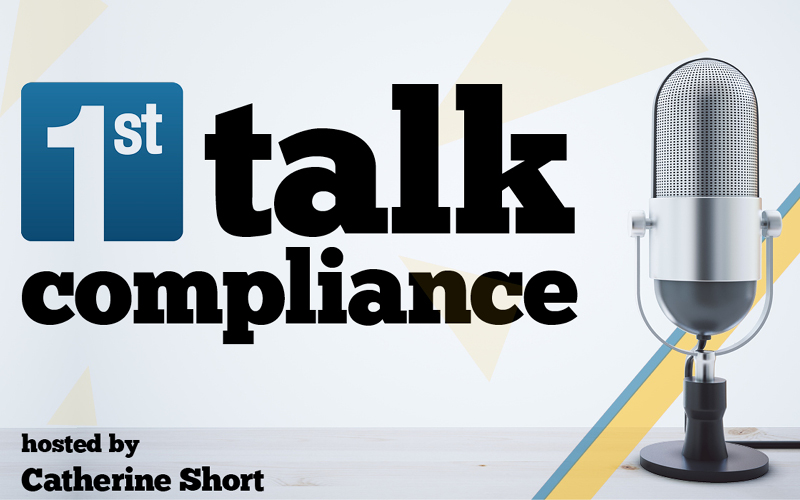Q&A: The New AKS and Stark Law Final Rules – Key Take-Aways
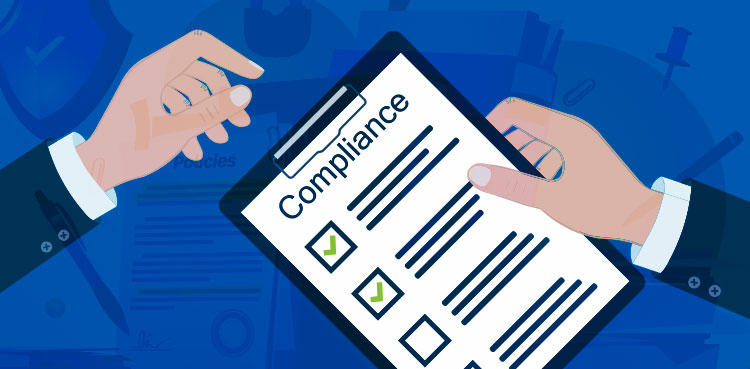
Rachel V. Rose, JD, MBA, presented the webinar “The New AKS and Stark Laws Final Rules – Key Take-Aways” recently and a recording can be viewed here. Rachel returned to answer many commonly asked questions from the webinar.
What are the primary drivers behind the new AKS safe harbors and Stark law exceptions?
There are three primary drivers behind the new Final Rules: (1) coordination of patient care; (2) removing obstacles in order to implement value-based programs, which focus on the quality of care and lowering costs instead of the quantity of care provided; and (3) creating or modifying safe harbors and exceptions so that organizations can implement value-based initiatives without the added fear of violating Stark and AKS.
What are the required components of a comprehensive Value-Based Enterprise (VBE) arrangement?
There are several components. Some of the key items, which need to be included in a governing document are as follows: define the VBE and its individual participants; name a person to oversee its implementation, finances, and outcomes; define a target population; identify a value-based purpose and related value-based actions; and compliance with the nuances of the new Stark law exceptions and AKS safe harbors.
Are there differences between the AKS and the Stark law regarding what persons may qualify as a VBE participant?
Yes. It is a key difference between the AKS and the Stark Law Final Rules. The AKS has an “ineligible entity list” that precludes certain persons from qualifying for the safe harbors and includes the following persons:
Pharmaceutical manufacturers, distributors, and wholesalers (referred to generally throughout this preamble as “pharmaceutical companies”); PBMs; laboratory companies; pharmacies that primarily compound drugs or primarily dispense compounded drugs (sometimes referred to generally in this rule as “compounding pharmacies”); manufacturers of devices or medical supplies; entities or individuals that sell DMEPOS, other than a pharmacy or a physician, provider, or other entity that primarily furnishes services, all of which remain eligible (referred to generally throughout this preamble as “DMEPOS companies”); and medical device distributors or wholesalers that are not otherwise manufacturers of devices or medical supplies (for example, some physician-owned distributors).
Can those persons that are on the AKS “ineligible entity list” still add value to a VBE?
Yes. Many medical device and software companies can run reports, which can even be de-identified, so that the VBE can see the changes in the patient outcomes for a particular set of parameters. In turn, this can assist the VBE or VBE participants, in achieving goals such as reducing hospital readmission rates.
 Rachel V. Rose – Attorney at Law, PLLC (Houston, Texas) – represents clients on healthcare, cybersecurity, securities and qui tam matters. She also teaches bioethics at Baylor College of Medicine. She has been consecutively named by Houstonia Magazine as a Top Lawyer (Healthcare) and to the National Women Trial Lawyer’s Top 25. She can be reached at rvrose@rvrose.com.
Rachel V. Rose – Attorney at Law, PLLC (Houston, Texas) – represents clients on healthcare, cybersecurity, securities and qui tam matters. She also teaches bioethics at Baylor College of Medicine. She has been consecutively named by Houstonia Magazine as a Top Lawyer (Healthcare) and to the National Women Trial Lawyer’s Top 25. She can be reached at rvrose@rvrose.com.
Be sure to view a recording of this webinar on YouTube and a recording with Rachel on our podcast, 1st Talk Compliance. Take a look at our book: HIPAA Privacy and Security, and our online compliance training courses such as What is HIPAA?, and HIPAA Business Associate Agreements Under HITECH. And check out Rachel’s other blogs
Q&A: HIPAA Compliance for Business Associates, Q&A: HHS Final Rules, Patient Access to PHI & Health Apps Intersect, Recent HHS Guidance Underscores the Importance of HIPAA Compliance and Q&A: HIPAA and Health Apps.

